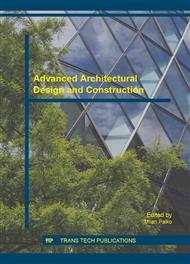p.385
p.391
p.396
p.402
p.411
p.417
p.425
p.431
p.437
Inaccuracies Caused by Non-Uniform Luminance Distribution of Artificial Sky Dome at Scale Model Measurements
Abstract:
The primary objective of daylighting measurements, by means of physical models, is the experimental finding of daylight conditions in the interior (in case of scale model of a specific room), or their impact on the surrounding buildings (in case of models of whole buildings). If these measurements are carried out even at the early stage of the building design, they can be very helpful in revealing gross deficiencies of the design or optimization of window apertures. According to the purpose of the measurement, physical models can be placed either on site of the future building – which advantage is the possibility of a reliable reproduction of the actual shading conditions, respectively the amount of reflected light by the envelop of existing buildings – or in laboratory, under artificial sky. The advantage of measurements using artificial skies is mainly the possibility to imitate the conditions of CIE overcast sky, thus the disadvantages of the variability of natural daylight are eliminated, while there is also a potentiality to optimize different solutions at the same boundary conditions. On the other hand, if the luminance distribution of the artificial sky is does not correspond with the theoretical luminance distribution of CIE overcast sky, the results of the measurements can be incorrect. The aim of this contribution is to illustrate through a case study, the importance of ensuring the appropriate boundary conditions at scale model measurements.
Info:
Periodical:
Pages:
411-416
Citation:
Online since:
January 2016
Authors:
Keywords:
Price:
Сopyright:
© 2016 Trans Tech Publications Ltd. All Rights Reserved
Share:
Citation:


